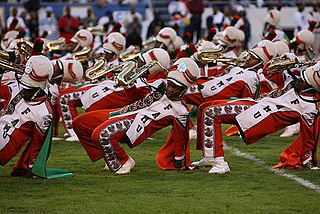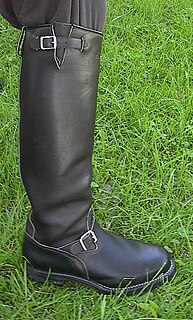The ankle knee step is a type of high step used by marching bands. It is named such because when executed properly, the ankle of one leg should be at the height of the knee of the other leg. This step is chiefly used by marching bands which consider themselves traditional or show style bands, although drum corps and corps-style marching bands may use this step sparingly for effect.
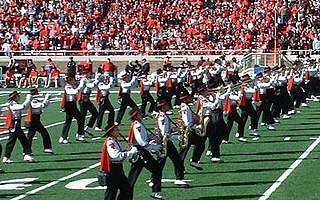
A marching band is a group in which instrumental musicians perform while marching, often for entertainment or competition. Instrumentation typically includes brass, woodwind, and percussion instruments. Most marching bands wear a uniform, often of a military style, that includes an associated organization's colors, name or symbol. Most high school marching bands, and some college marching bands, are accompanied by a color guard, a group of performers who add a visual interpretation to the music through the use of props, most often flags, rifles, and sabres.
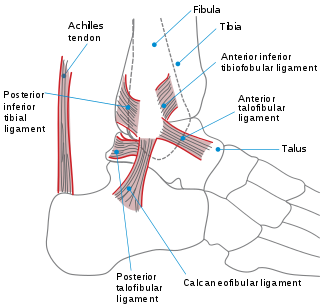
The ankle, or the talocrural region, is the region where the foot and the leg meet. The ankle includes three joints: the ankle joint proper or talocrural joint, the subtalar joint, and the inferior tibiofibular joint. The movements produced at this joint are dorsiflexion and plantarflexion of the foot. In common usage, the term ankle refers exclusively to the ankle region. In medical terminology, "ankle" can refer broadly to the region or specifically to the talocrural joint.

In humans and other primates, the knee joins the thigh with the leg and consists of two joints: one between the femur and tibia, and one between the femur and patella. It is the largest joint in the human body. The knee is a modified hinge joint, which permits flexion and extension as well as slight internal and external rotation. The knee is vulnerable to injury and to the development of osteoarthritis.
Contents
When performed, the toe should be the last part of the foot to leave the ground and the first part to hit it again. Although the step is a dynamic movement, care should be taken to step smoothly so as not to interrupt the air flow of wind instrumentalists. As the glide step rolls the foot from the heel to the toe, marchers executing the ankle knee step roll the foot from the toe to the heel.
Glide step is a form of movement used by marching bands to minimize upper body movement, enabling musicians to play their instruments and march without air-stream interruptions. Standardizing the style of marching also serves to add to the visual effect of a marching band. Sometimes special shoes are worn with a curved heel that facilitates rolling the foot. Glide stepping is used by many high school marching bands, college marching bands, and by many Drum Corps. Glide stepping is sometimes also known as "roll stepping".

The heel is the prominence at the posterior end of the foot. It is based on the projection of one bone, the calcaneus or heel bone, behind the articulation of the bones of the lower leg.
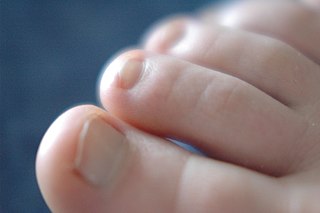
Toes are the digits of the foot of a tetrapod. Animal species such as cats that walk on their toes are described as being digitigrade. Humans, and other animals that walk on the soles of their feet, are described as being plantigrade; unguligrade animals are those that walk on hooves at the tips of their toes.
The entire step is a fluid motion; execution should be in time such that the "up" position is reached on the "and" counts and the "down" position is on the "down" counts. The foot comes forward in a scooping action rather than a bicycle step, which is to be avoided. [1]
